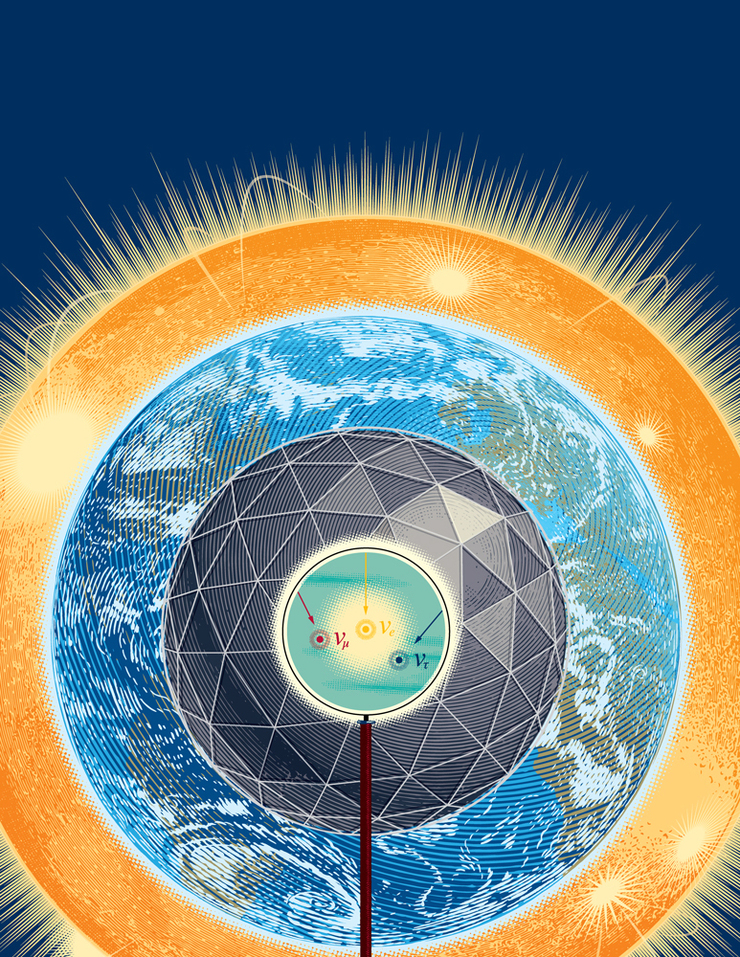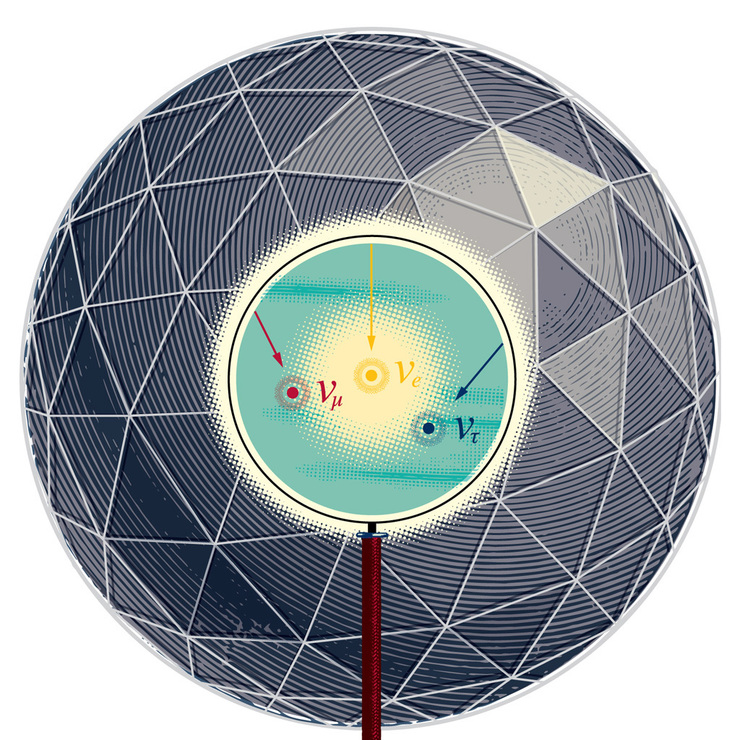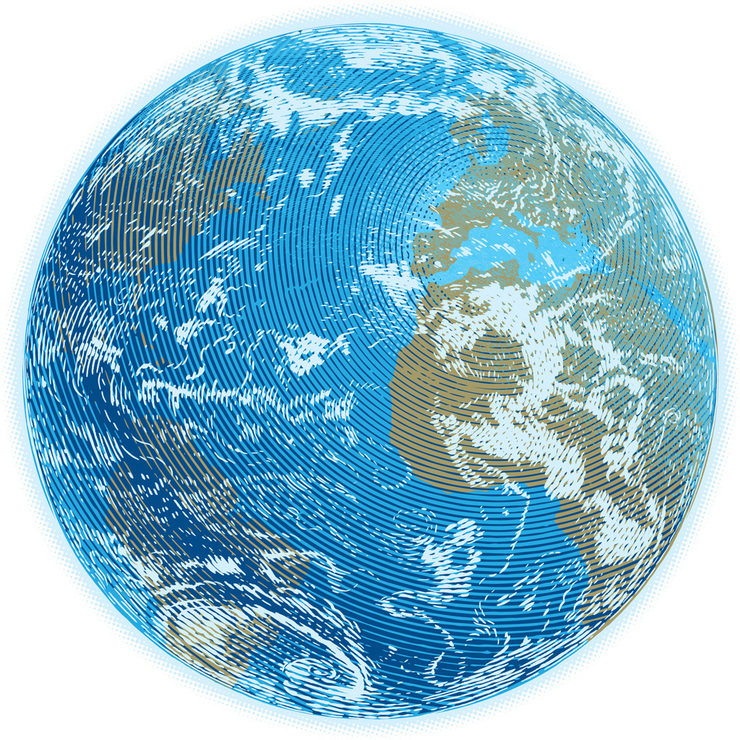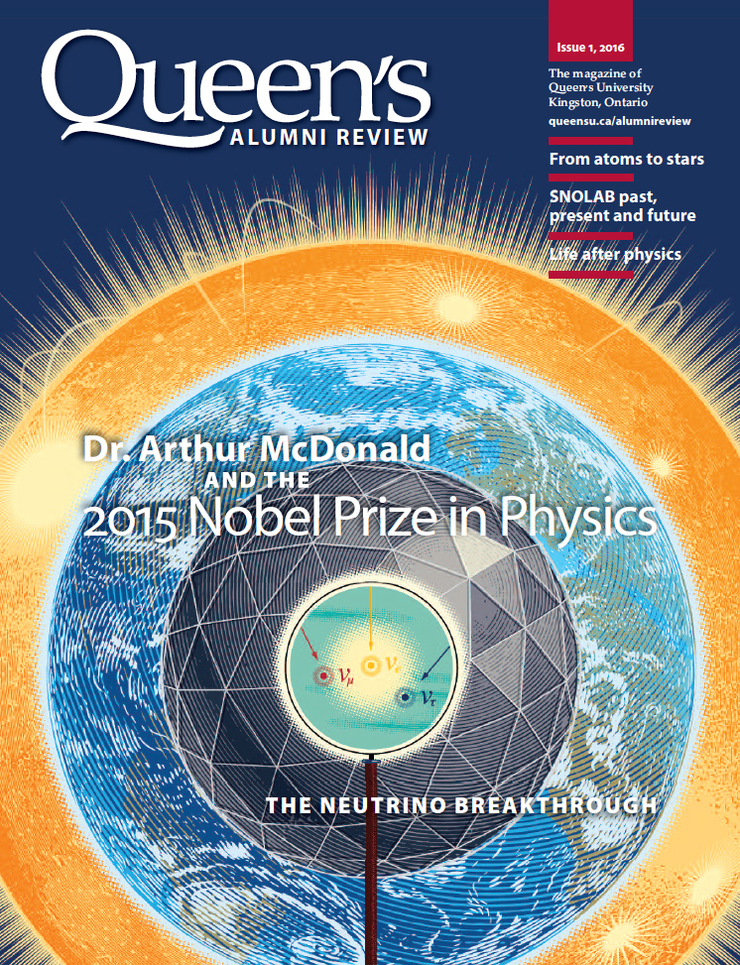Life, the Universe, and Everything
MARCH 1, 2016
I had the honour of working on this cover image for Queen's Alumni Magazine. Dr. Arthur McDonald was awarded the prestigious Nobel Prize for his research and discoveries in physics. This assignment combined my love of science with a challenging cover assignment, to explain the unseen, the subatomic, the Neutrino Breakthrough.

I am not a particle theorist, but I know this. Dr. McDonald and his team of researchers built an observatory 2 km deep in a mine shaft in Sudbury. What they discovered enhanced our understanding of physics and what we are made of, energy and the universe around us. The name of the observatory was SNOLAB, filled with heavy water and removed from man-made electric energy fields and interference.
Every second millions of neutrinos pass through us, unhindered and non-reactive, generated from deep within the sun. So then, how can they be observed and quantified?
Here's a very brief synopsis.
1. Neutrinos are sub-atomic particles coming from the sun.
2. There are three “flavours” of neutrinos: electrons, muon, and tau.
3. Neutrinos switch flavours during their oscillation.
4. Their oscillations prove that neutrinos have mass.
The SNOLAB observatory was able to record the oscillation of neutrinos. During oscillation, energy is released in the form of a photon. Observing this phenomenon established the mass of neutrinos, and enhanced our understanding of the universe in terms of it's overall mass, which affects how we understand where we came from and where we are heading.
The final illustration depicts a logorhythmic chain of images, from the sun to the earth to the SNOLAB sphere to the inner workings of an atom. A window into what we are made of.
Thanks to Andrea Gunn, Dr. Arthur McDonald, and the people at Queen's. Keep up the good work!
Every second millions of neutrinos pass through us, unhindered and non-reactive, generated from deep within the sun. So then, how can they be observed and quantified?
Here's a very brief synopsis.
1. Neutrinos are sub-atomic particles coming from the sun.
2. There are three “flavours” of neutrinos: electrons, muon, and tau.
3. Neutrinos switch flavours during their oscillation.
4. Their oscillations prove that neutrinos have mass.
The SNOLAB observatory was able to record the oscillation of neutrinos. During oscillation, energy is released in the form of a photon. Observing this phenomenon established the mass of neutrinos, and enhanced our understanding of the universe in terms of it's overall mass, which affects how we understand where we came from and where we are heading.
The final illustration depicts a logorhythmic chain of images, from the sun to the earth to the SNOLAB sphere to the inner workings of an atom. A window into what we are made of.
Thanks to Andrea Gunn, Dr. Arthur McDonald, and the people at Queen's. Keep up the good work!

Neutrinos and the acrylic sphere used in the experiments.

Earth. I enjoyed putting the elements for this together, a crazy combination of vector layers in Illustrator.

Final cover
© 2024 Carl Wiens
